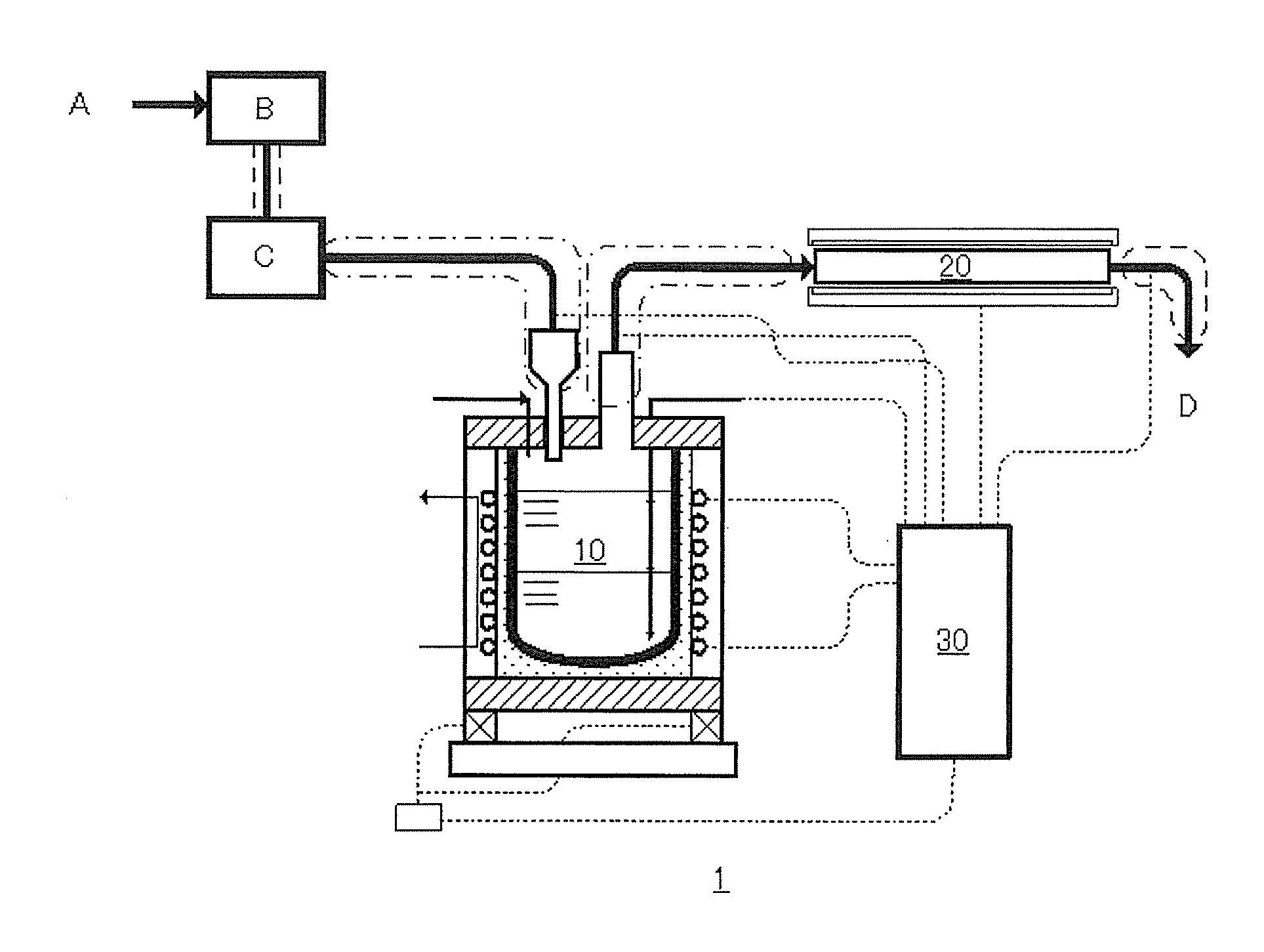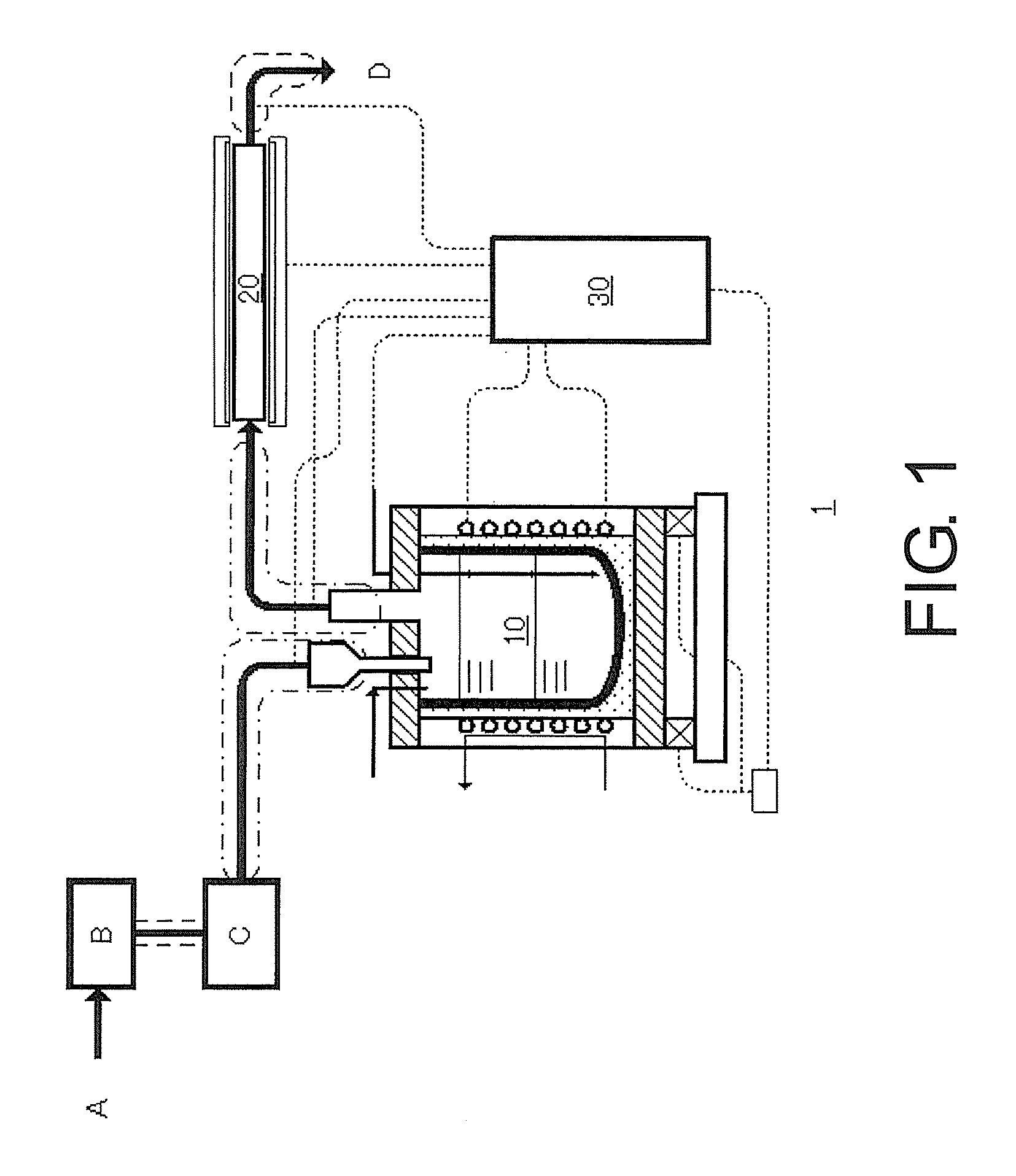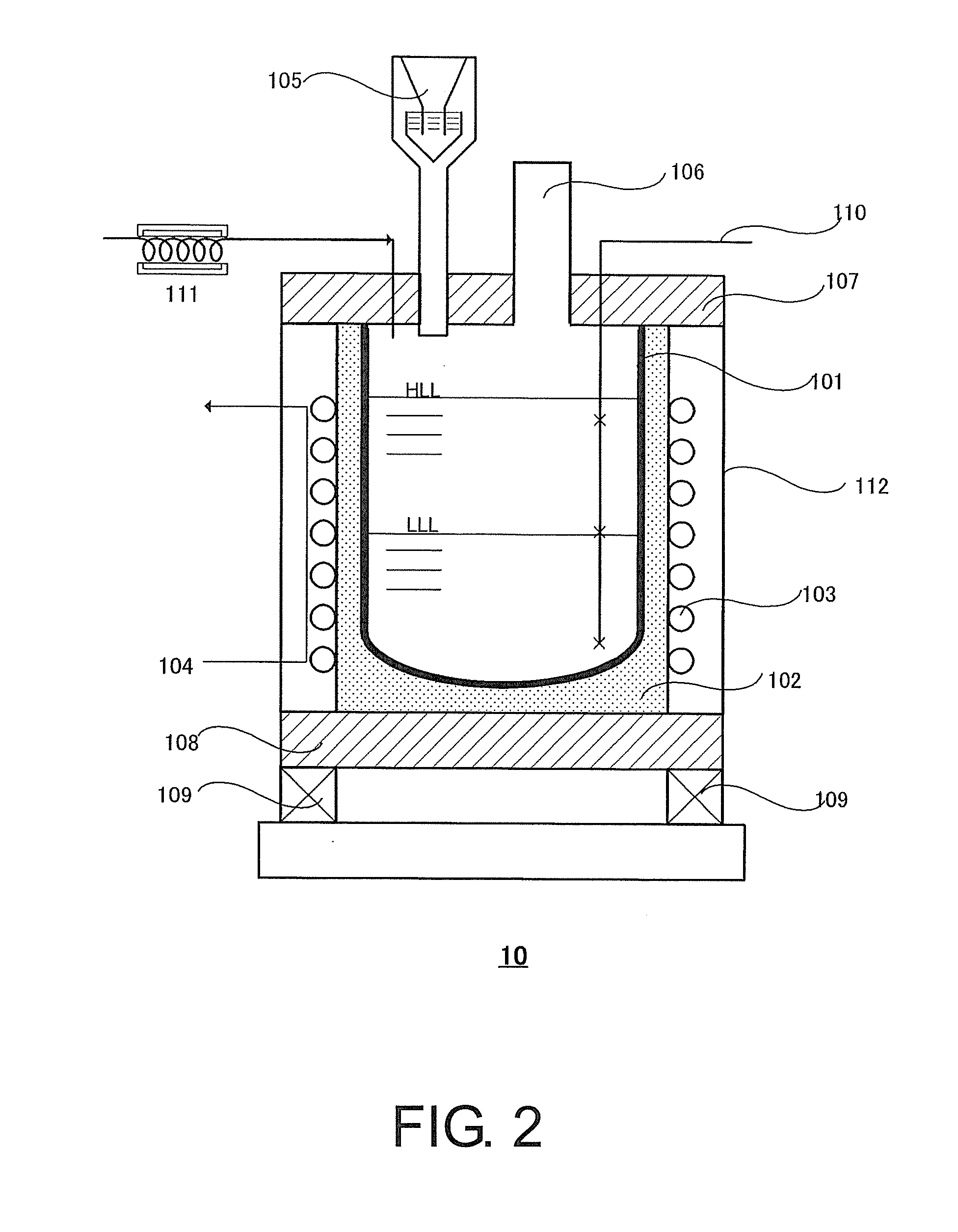Method for feeding zinc gas and apparatus therefor
a technology of zinc gas and zinc gas, which is applied in the direction of lighting and heating apparatus, furnaces, silicon compounds, etc., can solve the problems of poor production efficiency, high electric power cost in production cost, and unsuitable siemens process as a method, etc., to facilitate control, facilitate the effect of feeding, and large amount of energy
- Summary
- Abstract
- Description
- Claims
- Application Information
AI Technical Summary
Benefits of technology
Problems solved by technology
Method used
Image
Examples
example 1
[0090]Zinc gas evaporation apparatus 10 used had fused silica crucible 101 having an external diameter of 460 mm, an internal diameter of 400 mm, a radius of curvature of 230 mm and a height of 750 mm, and induction coil 103 having a height of 500 mm and an internal diameter of 550 mm. Crucible 101 was placed on bottom plate 108 made from a silica-alumina based low cement castable. A circumference of crucible 101 was thermally insulated with silica sand, evaporator cover 107 made from quartz was attached, and an upper part was covered with a ceramic fiberboard and an entire crucible assembly was placed on weighing apparatus (floor scale) 109. A power supply having a frequency of 500 Hz and an output power of 600 kW was used for high-frequency induction heating.
[0091]Into such zinc gas evaporation apparatus 10, 330 kg of melt zinc at 450° C. was introduced, subjected to high-frequency induction heating, and heated to a boiling point temperature. Input electric power for performing hi...
example 2
[0092]A change of apparatus efficiency K when a liquid level of melt zinc changed was determined by using an apparatus similar to the apparatus in Example 1. The results are shown in FIG. 6. When the liquid level of melt zinc was above 50% in a liquid level height position, no substantial change was caused, and when the liquid level of melt zinc became lower than 40% in the liquid level height position, a clear decrease of apparatus efficiency K was observed. The finding shows that, if the liquid level is maintained in a range higher than 40% in the liquid level height position of melt zinc, no significant change of apparatus efficiency K is caused and a zinc gas can be generated by controlling the generation with input electric power, and if the liquid level is maintained at a range higher than 50% in the liquid level height position, induction heating can be performed with high accuracy.
example 3
[0093]To zinc gas evaporation apparatus 10 similar to the apparatus in Example 1, gas heating apparatus 20 having fused silica heating zone 201 having a length of 3,000 mm and an internal diameter of 100 mm as heated to 1,100° C. using a Kanthal wire heater was connected, and further an outlet of gas heating apparatus 20 was connected to a zinc gas cooling and recovery device. Feed of a superheated zinc gas was tested using melt zinc obtained by performing molten salt electrolysis. The cooling and recovery device was made from steel having a surface lined with a ceramic caster material having a large thermal conduction, circumferentially surrounded with a water cooled jacket, and placed on a weighing apparatus (floor scale) to allow measurement of an amount of cooled and recovered zinc.
[0094]Testing for generating a zinc gas at a feed rate of VV=250 kg / hr was conducted. Corresponding input electric power was calculated to be WI=280 kW. Then, 330 kg of melt zinc at 450° C. as obtaine...
PUM
| Property | Measurement | Unit |
|---|---|---|
| temperature | aaaaa | aaaaa |
| boiling point temperature | aaaaa | aaaaa |
| temperature | aaaaa | aaaaa |
Abstract
Description
Claims
Application Information
 Login to View More
Login to View More - R&D
- Intellectual Property
- Life Sciences
- Materials
- Tech Scout
- Unparalleled Data Quality
- Higher Quality Content
- 60% Fewer Hallucinations
Browse by: Latest US Patents, China's latest patents, Technical Efficacy Thesaurus, Application Domain, Technology Topic, Popular Technical Reports.
© 2025 PatSnap. All rights reserved.Legal|Privacy policy|Modern Slavery Act Transparency Statement|Sitemap|About US| Contact US: help@patsnap.com



